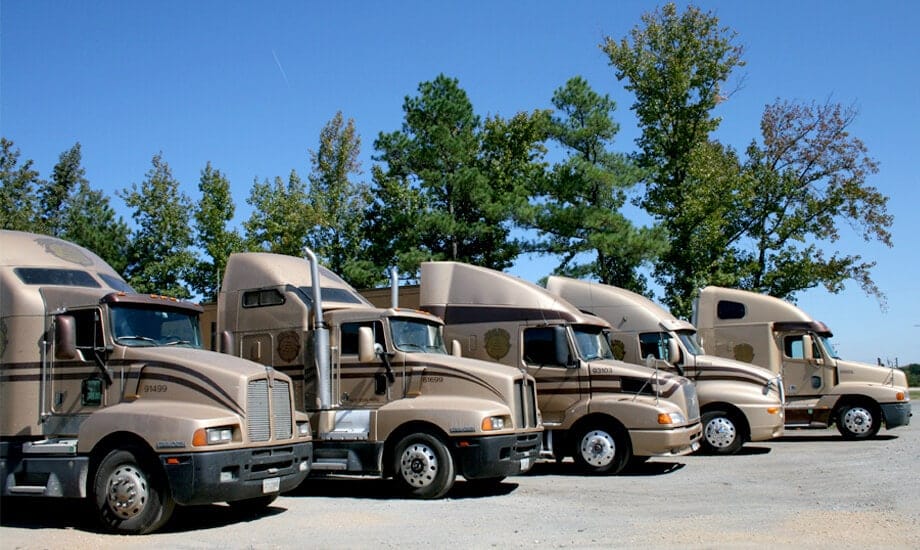למה חשובה אסטרטגיית אקלים
Greif משלב את אסטרטגיית האקלים שלנו בכל ההיבטים של הפעילות כדי להבטיח שאנו מצמצמים את הפליטות ונלחמים בשינויי האקלים במלואם. אנו מייצרים את המוצרים שלנו בצורה יעילה ככל האפשר, מיישמים פרויקטים להפחתת אנרגיה ופליטות לאורך כל פעילותנו ומתקשרים עם שותפים בכל שרשרת הערך שלנו כדי להרחיב עוד יותר את ההשפעה שלנו מעבר לחומותינו. בנוסף להיותנו חלק מהאחריות שלנו כיצרנית עולמית, מאמצי האקלים שלנו מספקים יתרון תחרותי.
ממשל
12%
אנרגיה שמקורה באנרגיה מתחדשת
הפגנת מצוינות בניהול פחמן, ממשל, אסטרטגיה ושיטות עבודה מומלצות, וביצועים טובים יותר מהציון הממוצע של CDP הכולל וצפון אמריקה של D.
בשנת 2020 יישמנו 73 פרויקטים להתייעלות אנרגטית, והביאו לחיסכון של $724,419 ברחבי הארגון שלנו. פרויקטים אלו כוללים החלפת ציוד ועדכון תהליכים המפחיתים את הביקוש לאנרגיה, כגון החלפת תנורים, דוודים והתאמת טמפרטורות מים ויישום נוהלי יעילות אנרגטית, כגון החלפות תאורה ו-HVAC. למידע נוסף על פרויקטי יעילות האנרגיה שלנו, ראה סעיף C4.2 ו-C4.3b שלנו תגובת אקלים CDP 2020.
הדגש בשנת 2020 היה שילוב מלא של מתקני Caraustar מדור קודם בדיווח האנרגיה והפליטות שלנו. מתקני Caraustar הוותיקים שלנו מהווים כעת כ-45 אחוז מהשפעת צריכת האנרגיה והפליטות שלנו בעולם, מה ששינה את היקף ההשפעה שלנו והוביל אותנו לאמץ פעילויות הפחתה חדשות המתאימות לעסק שלנו.
בשנת 2020, התחלנו לנקוט בצעדים כדי להבין טוב יותר את השפעת האקלים הרחבה יותר שלנו ולהתיישר עם המלצות כוח המשימה בנושא גילוי פיננסי הקשור לאקלים (TCFD). כדי להתחיל בתהליך זה, ערכנו ניתוח פערים של נוהלי ניהול האקלים הנוכחיים שלנו מול המלצות TCFD כדי לזהות אזורי מיקוד עדיפות לקידום אסטרטגיית האקלים שלנו ועיצבנו יעדי אקלים פוטנציאליים תחת תרחישי טמפרטורה מרובים. עבודה זו הובילה לזיהוי ואישור של יעד הפליטות החדש שלנו לשנת 2030 וחשפה צורך לבצע ניתוח תרחישים מפורט יותר כדי להבין טוב יותר הן את הסיכונים וההזדמנויות הקשורות לאקלים המעבר והפיזי שלנו. הסיכונים וההזדמנויות הקשורות לאקלים המזוהים כעת מסוכמים להלן ונדונים בפירוט נוסף במסמך שלנו תגובת CDP. בשנת 2021 נערוך ניתוח תרחישים שנועד להעמיק את הבנתנו את הסיכונים וההזדמנויות הללו, לאמת אם הם הסיכונים וההזדמנויות המהותיות ביותר הקשורות לאקלים ולחשוף סיכונים והזדמנויות נוספים הקשורים לאקלים מהותיים שצריכים לתת יד לאסטרטגיית האקלים הכוללת שלנו. בזמן שאנו עורכים עבודה זו, אנו שמחים לכלול את מדד ה-TCFD הראשון שלנו בדוח השנה, המדגים את תחומי ההתאמה הנוכחיים שלנו להמלצות TCFD. אנו מצפים לבנות על התקדמות זו בשנת 2021.
|
סיכון / הזדמנות |
נוֹשֵׂא |
תֵאוּר*
|
|---|---|---|
|
לְהִסְתָכֵּן |
השפעות על כושר הייצור |
שינויי האקלים, במידה שהם מייצרים עליית טמפרטורות הגורמות לעליית פני הים, עלולים להשפיע לרעה על יכולתנו לייצר ולהוביל את המוצרים שלנו. הפעילות שלנו כוללת מתקנים באזורי חוף נמוכים כגון Europoort, Vreeland ו-Asterweg, בהולנד; מלזיה; וסינגפור, כולן שעלולות להיות מושפעות משמעותית מעליית פני הים. |
|
לְהִסְתָכֵּן |
השפעות על עלויות עקיפות (תפעוליות). |
שינויי האקלים, במידה שהם משפיעים על מחיר חומרי הגלם, הדלק, התחבורה והגז הטבעי שלנו משפיעים על עלויות הייצור ואספקת חומרי הגלם שלנו. השפעות עשויות להיגרם מרגולציה מוגברת, תנאי שוק משתנים והשפעות על שרשרת האספקה שלנו. |
|
לְהִסְתָכֵּן |
השפעות על ההכנסות עקב ירידה בכושר הייצור |
שינויי האקלים, במידה שהם משפיעים על התדירות והחומרה של קיצוניות משקעים ואסונות טבע קשורים - כולל שריפות בר והצפות - עשויים להשפיע על היכולת שלנו לייצר ולהוביל את המוצרים שלנו. מצבים קיצוניים הקשורים לאקלים עשויים להשפיע על טביעת הרגל שלנו בכל גיאוגרפיה בכל עת.
|
|
הִזדַמְנוּת |
פיתוח ו/או הרחבה של מוצרים ושירותים בפליטות נמוכות |
Greif עובדת עם ספקי חומרי הגלם, שותפי התחבורה והצוותים הפנימיים שלנו כדי לפתח מוצרים קלים יותר ויעילים יותר באנרגיה ולספק שירותי הובלה ועזרה נלווים כדי לעזור ללקוחותינו להפחית את הפליטות הקשורות לאריזה שלנו (למשל EcoBalance, NexDRUM®). ההתקשרות שלנו עם הלקוחות באמצעות ראיונות וסקרים "קול הלקוח", ראיונות הערכת מהותיות ואפיקים אחרים, מאשרת שללקוחותינו יש רצון למוצרים עם פליטה נמוכה.
|
|
הִזדַמְנוּת |
שינוי בהעדפות הצרכנים
|
ככל שתאגידים, משקיעים והציבור הרחב נעשים יותר ויותר מתאימים לנושאים של שינויי אקלים, לקוחות הייצור התעשייתי נמצאים בסיכון לשינוי תפיסות ציבוריות סביב פעילות החברה וקווי המוצרים של החברה. על ידי פיתוח מוצרים ושירותים המפחיתים את פליטת גזי החממה והפסולת של לקוחות בשרשרת הערך שלהם, Greif יכולה להבדיל את עצמה מהמתחרים, לצבור נתחי שוק ולחזק את המוניטין החיובי שלה.
|
|
הִזדַמְנוּת |
שימוש בתהליכי ייצור והפצה יעילים יותר
|
עקב שינויים פוטנציאליים בחקיקה/רגולציה, אנו עלולים לספוג עלויות אנרגיה, סביבה ואחרות והוצאות הוניות מוגברות כדי לעמוד בדרישות. עם זאת, זה גם נותן לנו את ההזדמנות לשפר עוד יותר את יעילות האנרגיה שלנו, ובכך להפחית את העלויות והחשיפה שלנו לסיכונים אלה. |
מטרות והתקדמות
2020 סימנה את הסוף של יעד האנרגיה וגזי החממה הנוכחי שלנו, אך לא את הסוף של המחויבות שלנו לצמצם את ההשפעה הסביבתית שלנו. בשנת 2020, ערכנו ניתוח מפורט והערכה עם צד שלישי של היכולת שלנו להתחייב למטרה שתאושר על ידי יוזמת יעד מבוסס מדע (SBTi). אנו נרגשים להכריז על המחויבות שלנו להפחית את פליטת ה-Scope 1 ו-Scope 2 ב-28 אחוזים עד 2030, מנקודת המוצא של 2019. יעד חדש זה תואם את מדע האקלים הרווח כדי להגביל את ההתחממות הגלובלית להרבה מתחת ל-2 מעלות צלזיוס ומתבסס על הפחתת הפליטות של 11 אחוזים של החברה ליחידת הישג שהושגה בשנת 2020. עד סוף 2023, Greif גם תשלים הערכת היקף 3 של פליטות נטו ותקבע את היתכנות הפליטות לטווח ארוך כאפס. התאמה עם יוזמת יעדים מבוססי מדע.
כדי להשיג את היעד החדש שלנו, נבנה על ההשקעות הקיימות שלנו בציוד חסכוני באנרגיה, אנרגיה סולארית באתר וחשמל ירוק מרשת, עם גישה אסטרטגית שתכלול יוזמות נוספות להתייעלות אנרגטית ומקור לאנרגיה מתחדשת בקנה מידה גדול מחוץ לאתר.
יעד 2020: הפחתה של 10 אחוז בפליטות אנרגיה וגזי חממה (GHG) ליחידת ייצור, מנקודת מוצא תקציבית של 2014.
הִתקַדְמוּת: נכון לסוף שנת הכספים 2020, השגנו הפחתה של 11 אחוזים בפליטות ליחידת ייצור מקו הבסיס של 2014 והפחתה של 1.1 אחוז בצריכת האנרגיה ליחידת ייצור מקו הבסיס של 2014.
יעד 2030: צמצם את פליטת גזי החממה המוחלטת של Scope 1 ו- Scope 2 ב-28 אחוזים ביחס לקו הבסיס של 2019. Greif גם ישלים הערכה של פליטות Scope 3 ויקבע את ההיתכנות של שאיפה ארוכת טווח של אפס פליטות נטו עד סוף 2023.
ביצועים
|
|
לידיעתכם |
לידיעתכם |
לידיעתכם |
שנת 2017 |
לידיעתכם |
לידיעתכם |
לידיעתכם |
|---|---|---|---|---|---|---|---|
|
אֵנֶרְגִיָה |
|||||||
|
צריכת אנרגיה כוללת (MWh) |
3,228,000 |
3,057,000 |
3,009,000 |
3,058,000 |
3,103,200 |
5,398,000
|
5,423,000
|
|
% הפחתה באנרגיה ליחידת ייצור |
(שנת בסיס) |
לא |
1.8% |
3.1% |
4.2% |
0.0%
|
1.1%
|
|
% הפחתה בפליטות ליחידת ייצור** |
(שנת בסיס) |
6.0%
|
2.0% |
8.4% |
10.3% |
11.0%
|
11.0%
|
|
פליטת גזי חממה (טון מטרי) |
|||||||
|
היקף 1 |
362,300 |
322,500
|
345,700 |
367,700
|
376,700
|
675,900
|
692,900
|
|
היקף 2 (מבוסס מיקום) |
496,000
|
438,600
|
446,700
|
416,000
|
415,900
|
637,300^
|
589,500
|
|
היקף 3 |
251,500
|
221,900
|
2,927,000
|
3,089,000
|
2,867,090
|
4,403,000
|
4,148,000
|
|
סַך הַכֹּל |
1,109,800 |
983,000
|
3,719,400
|
3,872,700
|
3,659,600
|
5,716,200^
|
5,430,400
|
הערות:
- מָקוֹר: תגובת האקלים של Greif 2020 CDP
- נתוני אנרגיה ופליטות אחראים לכל מתקני Greif ו-Caraustar הוותיקים משנת 2019 ואילך.
- נתוני פליטות מהווים CO2, CH4 ו-N2O.
- פליטות היקף 3 לוקחות בחשבון הובלה והפצה במעלה הזרם. בשנת 2017 הורחב היקף 3 כך שיכלול סחורות ושירותים שנרכשו, מוצרי הון, דלק ופעילויות הקשורות לאנרגיה שאינן נכללות בהיקף 1 ו-2, לרבות פסולת הנוצרת בתפעול, נסיעות עסקים, נסיעות עובדים וטיפול בסוף החיים במוצרים שנמכרו. נתונים מבוססים על מתקני Greif מדור קודם בלבד.
- הצהרת אימות GHG לשנת 2020
**הפחתת האחוזים שלנו בפליטות ליחידת ייצור ירדה משנת 2015 לשנת 2016 עקב עלייה בפליטות נמלטות ממפעל הנייר שלנו בריברוויל, וירג'יניה, והפליטות הכוללות ממפעל הנייר שלנו במאסיון, אוהיו. גם גורמים מעודכנים של פליטות והתחממות כדור הארץ תרמו לשינוי זה. נתונים מבוססים על מתקני Greif מדור קודם רק כדי לשמור על השוואה לקו הבסיס של 2014.
^ נתונים אלה שוחזרו כדי להסביר טוב יותר את השימוש בקיטור באחד מהמפעלים שלנו.
זיכויים להפחתת פליטות (ERC)
בניסיון להוריד את פליטת מזהמי האוויר של Greif כמו תחמוצות חנקן (NOx) Volatile Organic Compounds (VOCs), מפעלי הקרטון של Greif בלוס אנג'לס, קליפורניה ופיצ'בורג, מסצ'וסטס החליפו את הציוד בטכנולוגיה יעילה יותר באנרגיה המפחיתה מזהמי אוויר. הפעילות במסצ'וסטס, לבדה, חסכה 96 טון של NOx ו-27 טון של VOC בשנה אחת. העדכונים גם אפשרו ל-Greif לנצל את היתרונות של תוכניות Cap-and-Trade בקליפורניה ומסצ'וסטס המספקות ERC עבור הפעלה דומות. בשנת 2019, הוענק ל-Greif $1,037,100 ב-ERCs באמצעות תוכניות אלה.
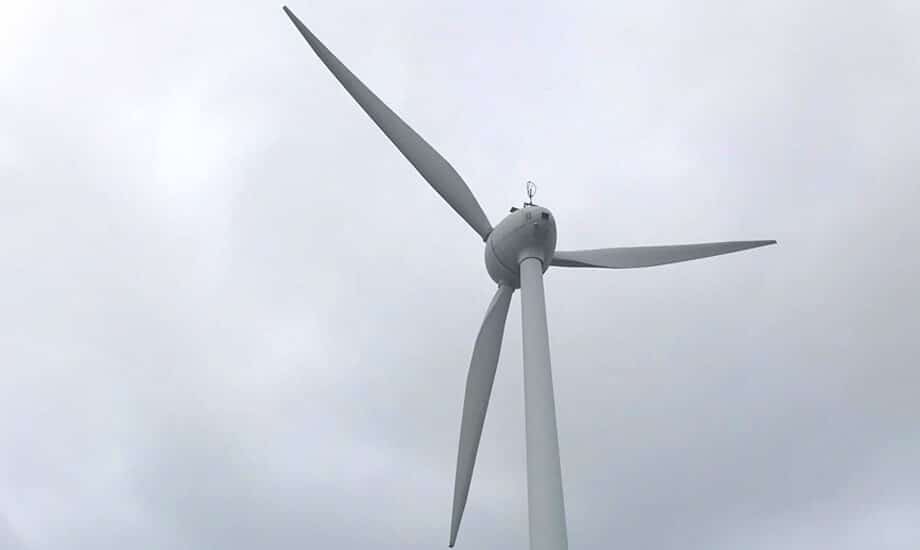
מעבר למלגזות חשמליות
כחלק ממטרת העל שלנו להחזיק בציוד יעיל יותר ובר קיימא, בשנת 2018 התחלנו להעביר את צי המלגזות שלנו מלהיות מונעות על ידי בנזין בעירה לחשמל, מה שמפחית את פליטת המלגזות שלנו בכ-50 אחוז. עד שנת 2020, המרנו 99 אחוז מהמלגזות שלנו ב-EMEA לחשמל, בעוד שצמצמנו את גודל הצי ב-17 אחוזים והשגנו חיסכון בעלויות של $352,000 בשנת 2020. בצפון אמריקה, החלפנו 2 אחוזים מהצי שלנו וחסכנו $20000, עד 250, ו- $2000000, ו- תוכנית. כתמיכה במדיניות הכוללת שלנו בנושא מלגזות מתחדשות, התוכנית תמשיך להיות מושקת ברחבי העולם. בנוסף ליתרונות הסביבתיים, המעבר מספק סביבת עבודה בטוחה יותר עבור עמיתינו על ידי הפחתת הצורך להחזיק מיכלי בנזין במתקנינו.
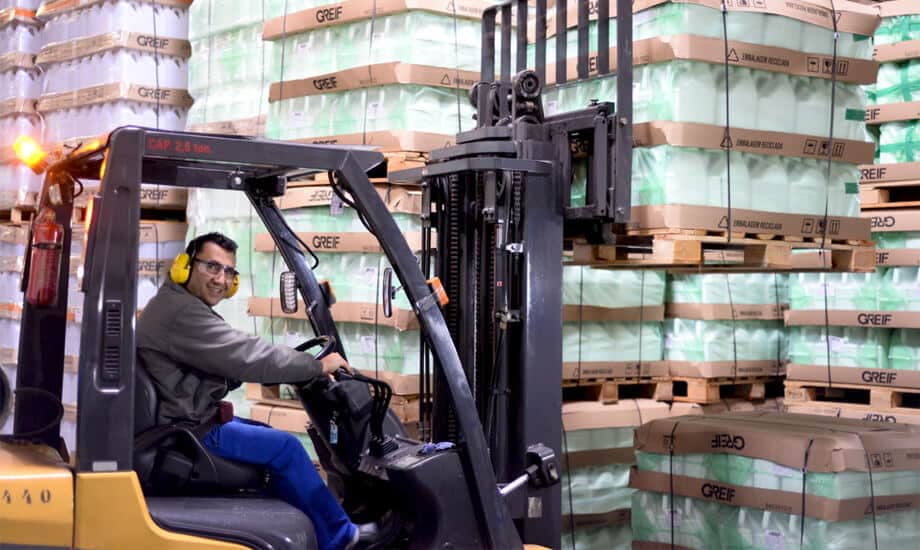
יעילות אנרגטית בייצור
Greif ביצע לאחרונה השקעה בקנה מידה גדול במכונת דפוס חדשה המשמשת לייצור ג'ריקנים מפלסטיק של Greif במפעל שלנו בקזבלנקה, מרוקו. המכונה החדשה צורכת עד 30 אחוז פחות אנרגיה ממכונות מהדור הישן, תוך שהיא מספקת רמות פרודוקטיביות גבוהות משמעותית. הציוד החדש מגדיל את כושר הייצור של עד 25 אחוז עבור בקבוקי ה-1 עד חמישה ליטר שלנו ונועד לייעל ולהפחית את השימוש בחומרי גלם, ולהרחיב את התועלת הסביבתית של המכונה מעבר לשימוש באנרגיה.
הצוות במרוקו גם יישם פרויקטים אחרים של יעילות אנרגטית כגון ביטול דליפות אוויר במפעלי הפלסטיק והפלדה שלנו, החלפת מכבשים הידראוליים בחשמליים בארבע מכונות, שדרוג ציוד ישן והחלפת מנועי DC במנועי AC במספר מכונות יציקת מכונות שעוזרות להפחית משמעותית את צריכת האנרגיה שלנו.
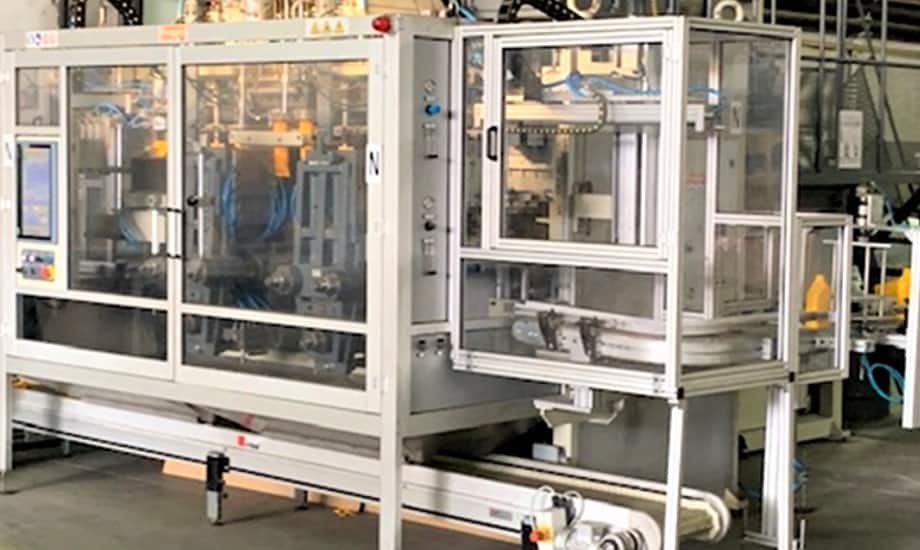
קידום אנרגיה מתחדשת
אנרגיה מתחדשת, כגון ביומסה, אנרגיית שמש ורוח, ישחקו תפקיד מרכזי בהתמודדות עם אתגרי שינויי האקלים בטווח הארוך. אנו מחויבים לבחון ולהרחיב את השימוש בטכנולוגיות אנרגיה מתחדשת על פני הפעילות הגלובלית שלנו כאשר לעשות זאת כדאי כלכלית ולטובת מחזיקי העניין שלנו. בכל הפעילות הגלובלית שלנו, התקנו למעלה מ-6,800 פאנלים סולאריים המסוגלים לייצר 1.84 מיליון קילוואט שעות של ייצור סולארי וחיסכון שנתי של $120,000. בשל ההשקעה המתמשכת שלנו, אנרגיה מתחדשת מהווה כעת 12 אחוז מצריכת האנרגיה של Greif.
בצפון אמריקה, התקנו יותר מ-2,000 פאנלים סולאריים בשבעה מתקנים, מספקים 640,000 קילוואט שעות (קוט"ש) של אנרגיה וחוסכים יותר מ-$100,000 בשנה.
בשנת 2016, שלושה מהמפעלים הגדולים שלנו בברזיל החלו לשאוב את האנרגיה שלהם בחלקה באמצעות משאבים מתחדשים. בשנת 2017, הרחבנו את התוכנית לשלושה מפעלים נוספים בברזיל, צמצמנו את הפליטות ב-70 אחוז וחסכנו $1.4 מיליון דולר בשנה.
באפריל 2017, מתקן RIPS בשנחאי של Greif השלים התקנת פאנלים סולאריים, תוך המרת 15.4 אחוזים מהחשמל של המתקן למקור מתחדש וחיסכון של למעלה מ-$16,000 דולר בשנה. לאורך כל פעילותנו בסין, אנו מייצרים אנרגיה מתחדשת באמצעות 4,800 פאנלים סולאריים באמצעות חוזי רכישת אנרגיה.
פעולות ה-FPS שלנו בטורקיה מייצרות יותר משני מיליון קילוואט-שעה של אנרגיה באמצעות טורבינות רוח וטחנות רוח.
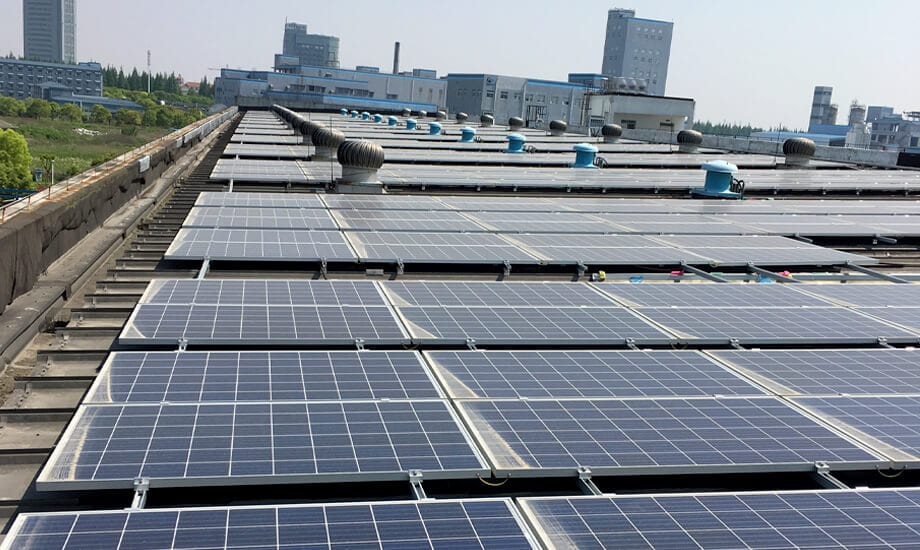
החלפת הדוד עם 10% שיפור יעילות אנרגטית
מפעל הקרטון של גרייף בפיצ'בורג, מסצ'וסטס הפעילה דוד שהותקן בתחילה כדי לתמוך בשתי מכונות נייר. הדוד היה מגודל לצורכי תפעול הטחנות וכתוצאה מכך לא פעל בצורה יעילה ככל האפשר וגרם לבעיות אמינות. בשנת 2019 נרכש דוד חדש על מנת לאפשר יעילות ואמינות קיטור משופרים. בשל שיפורים אלו, הדוד החדש צפוי לייצר 15,811,200 קילוואט ו-$324,000 חיסכון בשנה.
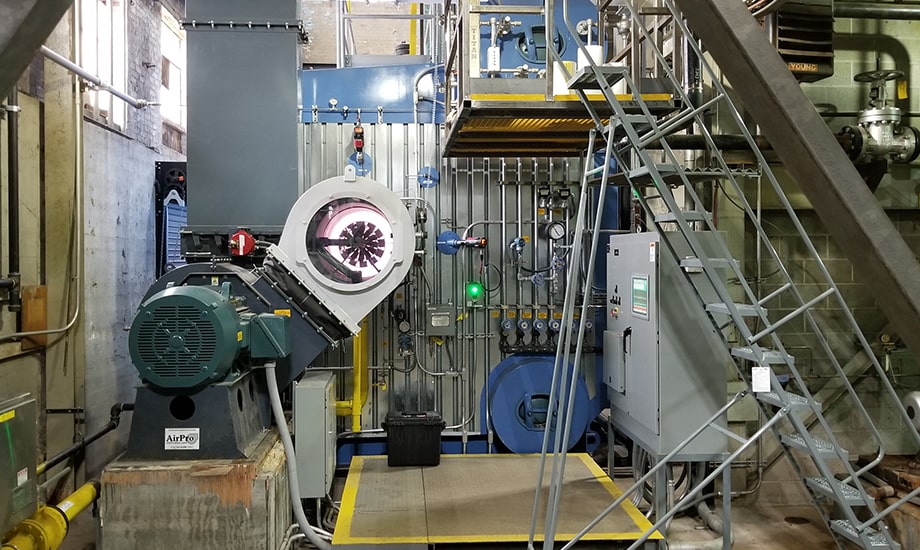
שותפות SmartWay Transport של EPA
כדי לנהל לוגיסטיקה בצורה אחראית לסביבה, Greif משתמש בספקים המאושרים באמצעות יוזמת SmartWay של ה-EPA בכל עת שאפשר. אנו כוללים אישור SmartWay במהלך תהליך הסמכת הספק החדש שלנו. בסיס הספקים המאושר על ידי SmartWay של Greif מהווה 77 אחוז מסך הקילומטרים שנסעו.
